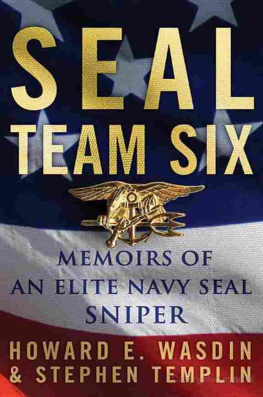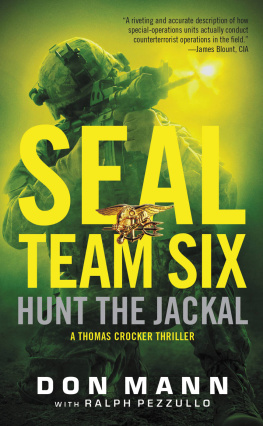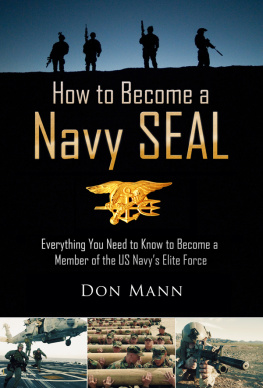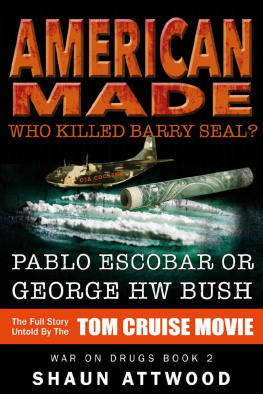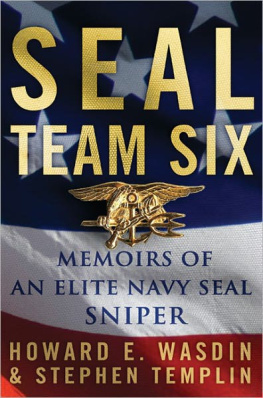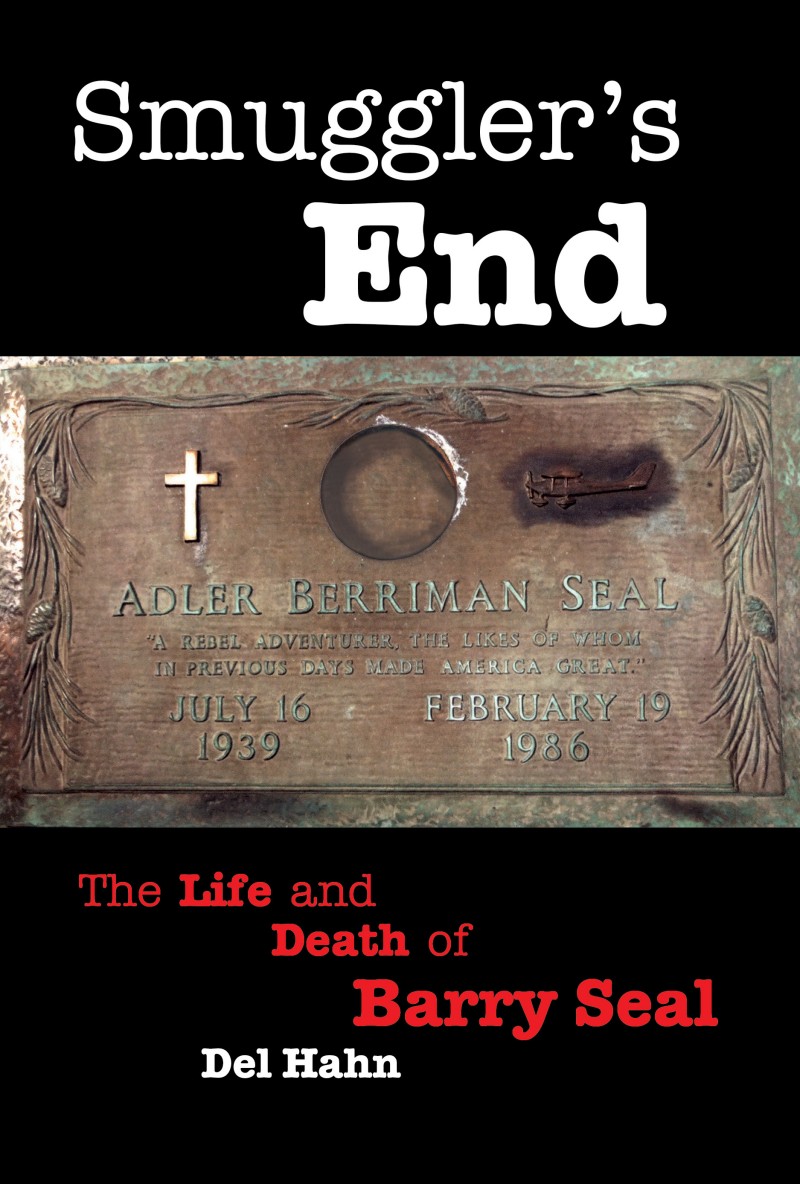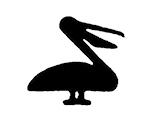Smugglers
End
The Life and
Death of
Barry Seal
Del Hahn
Edited by Tom Aswell
PELICAN PUBLISHING COMPANY
Gretna 2016
Many thanks to my task force pals, Jerry Bize, Charlie Bremer, our first-rate lawyer, Brad Myers and the late Jerry Phipps who replaced me on the task force when I retired.
Im grateful to Ed Grimsley, the FBI senior supervisory resident agent in Baton Rouge for assigning me to the task force and to our special agent in charge Ed Pistey for his support and sense of humor.
Thanks to the Special Operations Group (SOG) team of Bob Tucker, John Fleming, Dale Farmer, Joe Slaughter, Ed Lee, Bill Thees, Bob Dunbar and Jerry Smolinski for their handling of the challenging though sometimes boring surveillances. Most of them are retired but they could remember. I wish I could remember the names of the many DEA agents and FBI agents who worked the Title III wiretap, for they certainly deserve thanks. Lloyd East needs special recognition for keeping the lid on things at the plant which allowed all of us to survive Operation Coinroll.
Thanks to FBI agent Freddie Cleveland who brought me up to date on the case he worked against Fred Compton and others. Thanks to Jeff Santini and Cliff Cormier, who made the undercover buy from William Earle, Sr. Thanks to FBI Investigative Assistant Rebecca Cossey for her help. Thanks to Dick Gustafson, Stan Howard and Butch Milan who were willing to jog their memories.
I am especially appreciative of Rut Whittingtons help. The Colonel, who Ive known for 40 years, read the manuscript for me. Thanks to attorney Tommy Benton, Army Lt. Col. John W. McInnis, (Retired), Dr. Philip Smith and to the late Eddie Duffard.
Sadly, another lawyer who helped me tell the story is no longer with us. Al Winters, The Dancing Bear, died in June 2013. Thanks to Arkansas Judge J. Michael Fitzhugh and former Little Rock FBI supervisor Ron Kelly for their help.
Retired FBI agents Buzz Barlow, O. T. Eubank, Oliver Buck Revell, Francis Bud Mullin, Rudy Ferguson, Jack Lawn, Anne E. Buttimer, and Tom Ross were all supportive and assisted me in this effort . Thanks to Jim B. Brown and the late Clint Hebert, both retired from the US Marshals Service, and to Bob Seville, former chief US probation officer for the Middle District of Louisiana, now retired.
Im particularly appreciative of Russell Welch who spent a lot of time searching his records and answering my e-mail. Thanks to Bill Duncan for doing the same. Reporter Richard Behar was extremely helpful and provided me with a wealth of information from Reeds lawsuit against him and Time magazine.
Red Hall died in December 2013I want to acknowledge his willingness to talk with me and to answer my questions. Thanks to attorney Nicole Seligman for taking my phone call and encouraging me to send my questions to her client.
And thank you Colonel Oliver North for answering those powder puff questions.
Thanks to attorney Thomas R. Spencer, Jr., who represented Major General John Singlaub in the Christic Institute suit and gave me a copy of Dr. Susan Haucks book. Thanks to Scott Wheeler for reading the manuscript, giving me encouragement and once putting me on the airways.
Federal Judge James L. King was kind enough to spend considerable time on the phone with me and I want to express my thanks.
Investigative journalist Mara Leveritt deserves credit. Because of her tenacity, the FBI responded to her Freedom of Information (FOIA) request and released documents from the Barry Seal investigative file. She posted them on her Web site for anyone to use. Thanks to Pam Rotella who was kind enough to search her inventory of Mena airport photographs.
The University of Arkansas, University Libraries, Special Collections Division has much of the material generated by the Arkansas Committee during their investigation of Mena. Anne Prichard of the Research Department was very helpful in providing the documents I requested from Special Collections.
Thanks to Matt Ehling of Public Record Media who provided me with background information given to him by Gene Wheaton. I am appreciative of the efforts of Projects Editor Sonny Albarado, of the Arkansas Democrat-Gazette and Head Librarian Michelle Goad, in finding the photo of Seals C-123. Im very appreciative of the efforts of Alyson Hoge, deputy managing editor of the Arkansas Democrat-Gazette in making the C-123 photo available.
I am grateful for the efforts of my agent and editor Tom Aswell. Without his interest in the story of Barry Seal, I wouldnt be thanking anyone.
Once my book was accepted for publication, Pelican Publishing assigned the task of final editing to Mark Mathes. He did a masterful job and never chastised me for a constant flow of my stets and revisions.
This was a family project. My son, David, Chairman of the Department of Mechanical Aerospace Engineering at the University of Florida, encouraged me but reminded me that he published first with Heat Introduction. His wife, Allison, spent hours on the phone editing. My daughter, Jannean, and her husband, Kevin, saw to it that I got regular breaks from the computer and went to the casino.
Finally, thank you Carolyn, my soul mate. Your patience during my eruptions, your support and encouragement in the face of rejection slips too numerous to count kept me going for years. Your insistence that we meet every afternoon for happy hour enabled me to complete the project. You helped immeasurably.
Barry Seal. Photo by the Advocate, Oct. 16, 2015, Capital City Press/Georges Media Group, Baton Rouge, LA. Used with permission.
Part 1: The Man
Friendly Skies
Shortly after midnight on Thanksgiving in 1982, a few residents of the tiny community of Port Vincent, Louisiana, were roused from their sleep by the sound of engines from a low-flying aircraft. No one bothered to get up and look because there was a private landing strip nearby and a plane at night wasnt unusual.
Landing lights flared. A twin-engine Piper Navajo skimmed over the trees, dipped down and touched gently onto the grass of the three thousand-foot landing strip. The plane slowed and braked to a halt near the end of the runway as a Ford pickup, headlights ablaze, sped up to the plane and stopped. Rossi, the young driver, trotted toward the plane whose engines were still idling.
The cargo hatch opened. The pilot jumped down, dressed in a khaki flight suit. At two hundred and forty pounds and standing only five feet nine inches, Barry Seal was porky-looking. The sweat-stained flight suit was stretched to its limits around his pear-shaped body.
Stay clear of those props, he growled at Rossi.
Co-pilot Emile Harold Camp, Jr., remained aboard and began to shove military-style duffel bags through the open hatch. Seal watched and glanced nervously at his wristwatch, as Rossi grabbed the bags and slung them into the back of the pickup. When the last of six duffel bags was loaded Rossi pulled a tarp over the cargo. Seal shot him a thumbs-up, climbed into the plane and pulled the cargo hatch shut as Rossi carefully backed the pickup away from the plane until it was clear.
The twin engines accelerated to a roar and the plane turned and began to roll. The pickup was speeding down the gravel road that ran parallel to the landing strip just as the Navajo was clearing the trees at the end of the strip. The plane had been on the ground less than six minutes.



